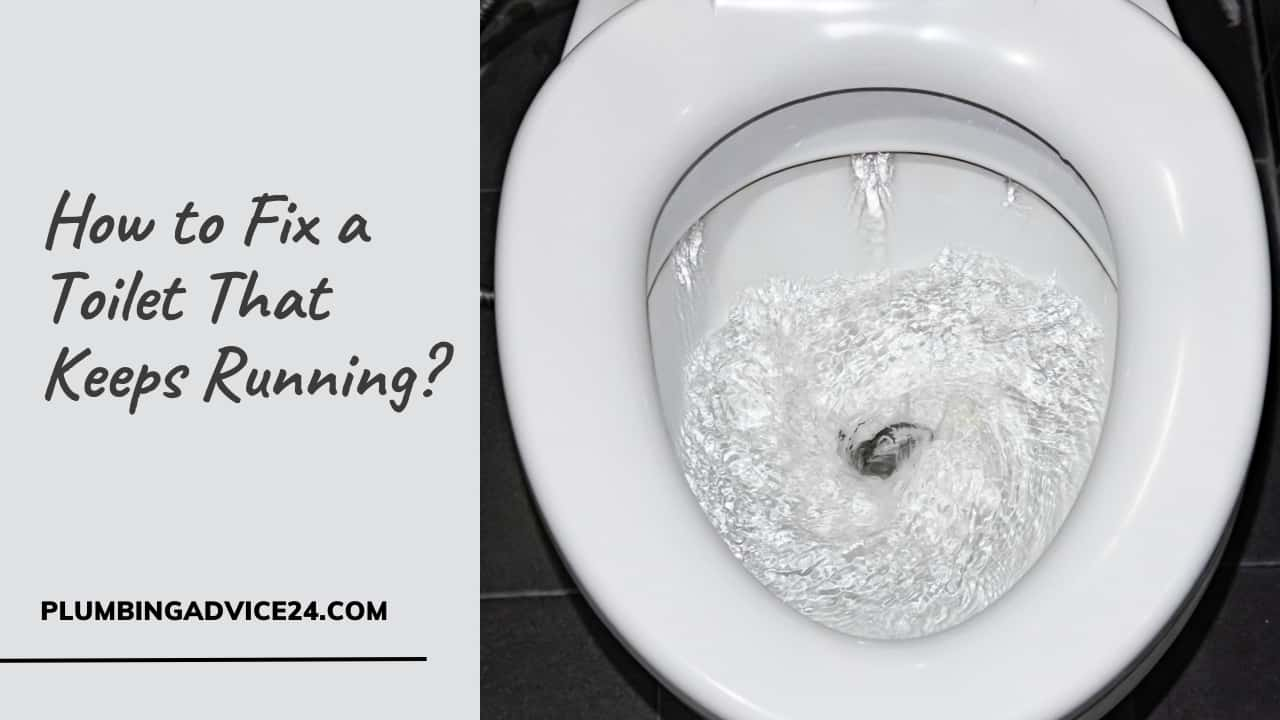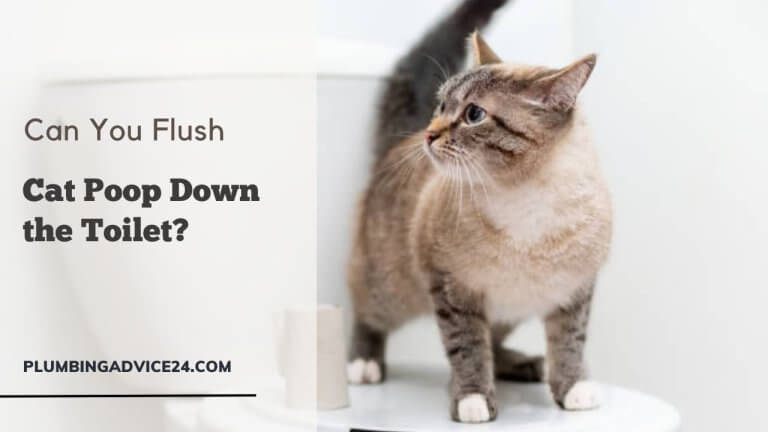How to Fix a Toilet That Keeps Running
A running toilet is the most prevalent plumbing problem. It can result in water waste and raise your water bill. The good news is that fixing a running toilet often doesn’t need calling a plumber. This post will explain how to fix a leaky or continuously running toilet.
Signs That Can Indicate You Have a Running Toilet
A running toilet is a common plumbing problem that wastes a lot of water and can waste hundreds of gallons of water each day while driving up your water bill. The problem is usually caused by a faulty fill valve, flapper valve, or both. Here are some signs that indicate you have a running toilet:
The Sound of Running Water:
If you haven’t flushed recently, but still hear the sound of running water in the toilet tank, chances are your toilet is running. Often you can hear a hissing sound from a running toilet after flushing instead of the usual roaring sound.
Continuously Moving Water in the Bowl:
If you don’t flush the toilet, but the water in the bowl is constantly moving or swirling, it could be a sign of a running toilet.
The Water Level in the Tank Constantly Dropping:
If your toilet hasn’t been flushed, yet you see the water level in the toilet tank constantly dropping, chances are your toilet is running.
The Handle Is Loose or Jiggles:
The handle on your toilet may be loose or jiggle due to the flapper valve not sealing properly. If you see any such sign on the handle of your toilet, it could indicate a running toilet.
Suddenly Increase in Water Bill:
A running toilet can waste a significant amount of water, if you notice unusually high water bills, it could indicate a running toilet. However, high water bills can also be a sign of plumbing leaks elsewhere in your home. So watch out for other signs of toilet flushing as well.
Related Post : How to Stop Your Toilet from Sweating
How to Fix a Running Toilet?
If you see any signs of a running toilet, it’s important to fix it as soon as possible. This will prevent you from wasting hundreds of liters of water and reduce your utility bills. following the below steps to fix a running toilet:
Step1. Identify the Problem.
The First step is finding the cause of the running toilet. A broken fill valve or flapper is often to blame when a toilet doesn’t stop running. You may identify the damaged part by removing the tank lid and flushing the toilet.
Check the tanks inside to see what’s happening. Water will enter the bowl even after you flush if the flapper does not entirely close when you release the handle. The fill valve is probably broken if the flapper functions appropriately.
Step2. Turn Off the Water.
Before trying to fix the toilet, shut off the water supply. Usually found behind the toilet, near the floor, is the cutoff button. Reversing the valve’s movement will cause it to shut off entirely. To get the most water out of the tank, flush the toilet afterward.
Step 3: Fix the Flapper.
Using these techniques, you should be able to fix the issue if the flapper is the cause.
1. Remove the Old Flapper:
Start by turning off the toilet’s water source. To clean the tank, flush the toilet after that. The chain connecting the old flapper to the flush handle arm should be pulled out.
2. Install the New Flapper:
Keep the flapper in the exact location when replacing an old one with a new one. Connect the chain that moves the toilet flapper to the flush handle button.
3. Adjust the Chain Length:
The chain must be extended but not too so. Overly long chains run the risk of being tangled below the mechanism, which would make it challenging for the flapper to close. The flapper won’t be able to open if the chain is too short entirely.
4. Turn the Water Supply Back On:
Turn on the water flow and flush the toilet to ensure everything functions correctly after installing the new flapper and modifying the length of the chain connecting it to the flapper.
Step 4: Fix the Fill Valve.
You may fix the fill valve if it isn’t working correctly by carrying out the following actions:
1. Remove the Old Fill Valve:
Start by turning off the toilet’s water source. To clean the tank, flush the toilet after that. The water supply line cannot be disconnected until the lock bolts on the fill valve have been removed. The tricky fill valve has to be taken out.
2. Install the New Fill Valve:
At the base of the tank, replace the new fill valve. Tighten the lock nut to keep the fill valve in place. Install the connection between the fill valve and the water supply line.
3. Adjust the Water Level:
A float within the fill valve shows how much water is in the tank. After adjusting the float, the water level should be about an inch below the top of the overflow tube.
4. Turn the Water Supply Back On:
Turn on the water supply and flush the toilet after setting up the new fill valve and adjusting the water level to ensure everything works properly.
Step 5: Check for Other Issues.
You may need to look for the problem elsewhere if fixing the flapper or the fill valve is insufficient to stop a toilet from running.
1. The Chain Length:
Ensure the chain connecting the flush handle arm to the flapper is short enough.
2. The Flapper Seal:
Make that the flapper is functioning correctly. The flapper may stop properly sealing if worn out or broken, enabling water to enter the bowl.
3. The Overflow Tube:
Verify that the tank doesn’t contain too much water. The overflow tube may get clogged if too much water is in the bowl, forcing the toilet to flush frequently.
4. The Toilet Handle:
Make sure the toilet handle is not broken or obstructed in any way before flushing. The flapper could not close correctly if the grips fell off.
5. The Flush Valve:
How much water enters the toilet bowl is controlled by the flush valve. Replace the flush valve if it is rusty or broken.
Step 6: Maintenance For Your Toilet
It would help if you took care of your toilet to avoid issues with it running in the future. Here are some suggestions:
Clean the Toilet:
Maintaining a clean toilet may increase the lifespan of its parts, including the fill valve and flapper, which may be harmed by dirt.
Check for Leaks:
Regular checks should be made on a toilet that is dripping. The cost of using water each week can increase if a leak results in a significant amount of water loss.
Replace Parts as Needed:
It would help if you fixed the fill valve or flapper as soon as possible to prevent further problems.
Consider Upgrading Your Toilet:
If your toilet is old and in bad shape, you should consider replacing it. You can lower your monthly water bill using a modern toilet, which uses much less water than older versions.
Conclusion:-
Fixing a toilet that keeps running is simple if you know what to do and have the right tools. It may be inefficient and inconvenient to have a running toilet. You can reduce the cost of hiring a plumber if you carefully read this article and adhere to the recommendations. Routine toilet maintenance may save you money and time over time by avoiding the need for pricey repairs. Consider switching to a more recent model that is less expensive and consumes less water.
Related Post : Why Is My Toilet Bubbling And How to Fix It
What Is the Most Common Cause of a Running Toilet?
A running toilet is a common plumbing problem that wastes a lot of water and can waste hundreds of gallons of water each day while driving up your water bill. The problem is usually caused by a faulty fill valve, flapper valve, or both.
Why Does My Toilet Keep Running?
A running toilet is a common household problem that wastes a lot of water and can increase your water bill. Your toilet may be running usually due to a faulty fill valve, flapper valve, or both.
How Do You Know If Your Toilet Is Running?
If you notice the following signs in your toilet, you should understand that your toilet is running:
- The Sound of Running Water.
- Continuously Moving Water in the Bowl.
- The Water Level in the Tank Constantly Dropping.
- The Handle Is Loose or Jiggles.
- Suddenly Increase in Water Bill.
How to Stop Toilet from Running?
If you see any signs of a running toilet, it’s important to fix it as soon as possible. This will prevent you from wasting hundreds of liters of water and reduce your utility bills. To prevent the toilet from running, its flapper valve and fill valve should be fixed. And if necessary it should be changed.
If You Liked This Post? So Share It with Your Friends
Suggested Articles:














